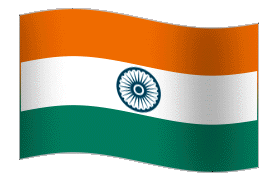Introduction
The partnership between India and Germany in the field of skill development is increasingly significant — especially for institutions like your Nihar Skill Education that operate in the vocational training & placement space. This article explores the milestones, the current thrust, and the opportunities arising from this collaboration.
Background & Milestones
- Germany has long been known for its strong vocational education & training (VET) system, especially the dual-system that integrates workplaces and training institutions. Business Standard+1
- In India, the Ministry of Skill Development and Entrepreneurship (MSDE) has been working with German partners on adapting such models to Indian context. India Brand Equity Foundation+2Business Standard+2
- One key initiative: a project launched in 2016 where Germany committed ~EUR 3 million (≈ ₹22.6 crores) to foster workplace-based vocational training in select industrial clusters in India. India Brand Equity Foundation+1
- In recent years, the cooperation has also expanded into green-skills (vocational training in renewable energy, EVs, sustainable mobility) and international mobility of skilled labour. giz.de+2msde.gov.in+2
- In February 2024, the MSDE hosted an “India-Germany Dialogue on Avenues for Future Collaboration” with the German delegation led by the State Secretary of the German Federal Ministry of Labour & Social Affairs. EdexLive+1
Key Areas of Cooperation
- Curriculum & Training Standards
- Germany and India are working to align Indian vocational programmes with German/international standards, especially in sectors like automotive, electronics, green mobility. giz.de+1
- Example: The “Green Skills” project by German cooperation agency GIZ in India focuses on expanding access to green jobs, especially for women, through vocational education and training. giz.de
- Green & Sustainable Skills
- With global push for sustainability and India’s push for clean energy, vocational training in EVs, solar, charging infrastructure is a major focus. Germany’s industrial know-how in these domains makes it a valuable partner. thedialog.net+1
- Mobility of Skilled Workforce
- Germany faces a shortage of certain skilled professions and is looking to Indian talent. India–Germany cooperation includes pathways for skilled migration and exchange of labour. Auswärtiges Amt+1
- For example: NSDC International (India) is engaging with German employers and training providers to prepare Indian candidates for international careers via language training (German) + domain-skills preparation. ETEducation.com
- Policy & Institutional Frameworks
- The renewed Memorandum of Understanding (MoU) on Skill Development & Vocational Education and Training (VET) between India and Germany sets the institutional basis for cooperation. msde.gov.in+1
- At the inter-governmental level, the cooperation touches on migration, labour mobility, training exchange and quality assurance in vocational education. Bundesregierung+1
Why This Matters for Nihar Skill Education
- By aligning your courses with internationally recognised VET standards, you increase credibility and employability of your trainees (both domestically and potentially abroad).
- The green-skills segment is a growth area: offering courses on solar-technologies, EV servicing, etc. – matches the Indo-German focus.
- If Nihar Skill Education can integrate elements like German language training, workplace-based training, partner with German firms or Indian-German projects, you may open pathways for your students to gain global exposure.
- Emphasising mobility and placement in your messaging becomes a strong value proposition (skill in India → possibility of working abroad).
Current Opportunities & Strategic Implications
- With the Indian policy environment (e.g., National Education Policy 2020) emphasising vocational education, and Germany looking for skilled workers, the timing is right. NSN
- Green-skills training is likely to attract funding and support (public/private) because it sits at intersection of industry, sustainability and employment.
- You can explore partnerships: maybe tie-ups with German agencies or embed German best-practice modules, even if informally, to differentiate your training.
- For your blog/article: highlighting this collaboration gives your institution authority and helps position it as future-ready and globally aligned.
Challenges to Note
- Ensuring that your curriculum truly meets the benchmark standards (not just marketing). German-style VET emphasises strong industry linkage and workplace exposure.
- Language and cultural preparation for mobility: German employers expect not just technical skill but also language ability and cultural adaptation. NSDC’s model includes these elements. ETEducation.com
- Implementation on ground: access to well-equipped labs, industry linkage, certified trainers — all are vital for delivering on the promise of international collaboration.
- Keeping up with policy/immigration changes: for instance, labour mobility conditions may change over time.
Conclusion
The India–Germany skill development collaboration presents a win-win: India builds its skilled workforce aligned with global standards; Germany fills its labour gaps; and






